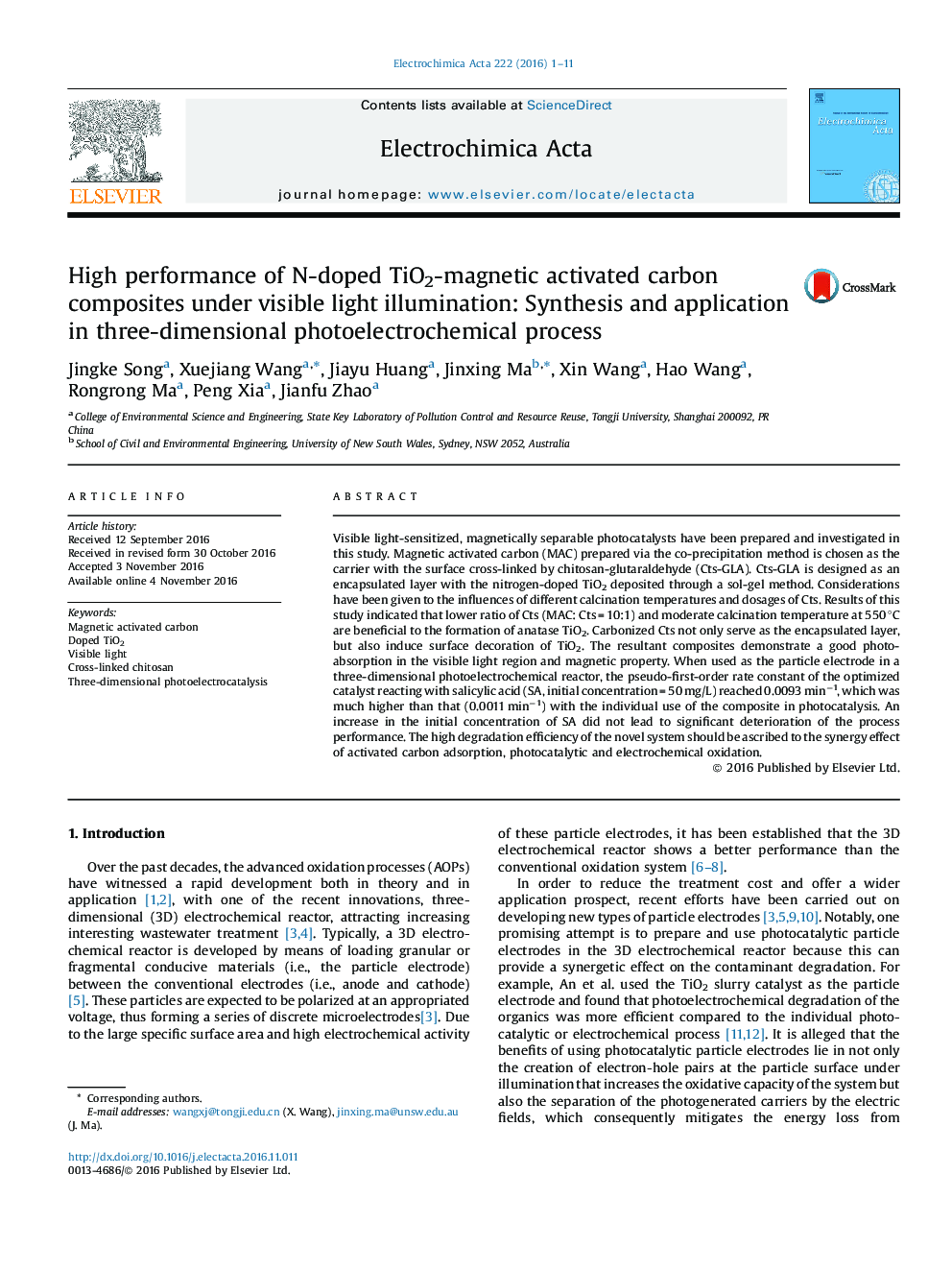| Article ID | Journal | Published Year | Pages | File Type |
|---|---|---|---|---|
| 6472501 | Electrochimica Acta | 2016 | 11 Pages |
Visible light-sensitized, magnetically separable photocatalysts have been prepared and investigated in this study. Magnetic activated carbon (MAC) prepared via the co-precipitation method is chosen as the carrier with the surface cross-linked by chitosan-glutaraldehyde (Cts-GLA). Cts-GLA is designed as an encapsulated layer with the nitrogen-doped TiO2 deposited through a sol-gel method. Considerations have been given to the influences of different calcination temperatures and dosages of Cts. Results of this study indicated that lower ratio of Cts (MAC: Cts = 10:1) and moderate calcination temperature at 550 °C are beneficial to the formation of anatase TiO2. Carbonized Cts not only serve as the encapsulated layer, but also induce surface decoration of TiO2. The resultant composites demonstrate a good photo-absorption in the visible light region and magnetic property. When used as the particle electrode in a three-dimensional photoelectrochemical reactor, the pseudo-first-order rate constant of the optimized catalyst reacting with salicylic acid (SA, initial concentration = 50 mg/L) reached 0.0093 minâ1, which was much higher than that (0.0011 minâ1) with the individual use of the composite in photocatalysis. An increase in the initial concentration of SA did not lead to significant deterioration of the process performance. The high degradation efficiency of the novel system should be ascribed to the synergy effect of activated carbon adsorption, photocatalytic and electrochemical oxidation.
